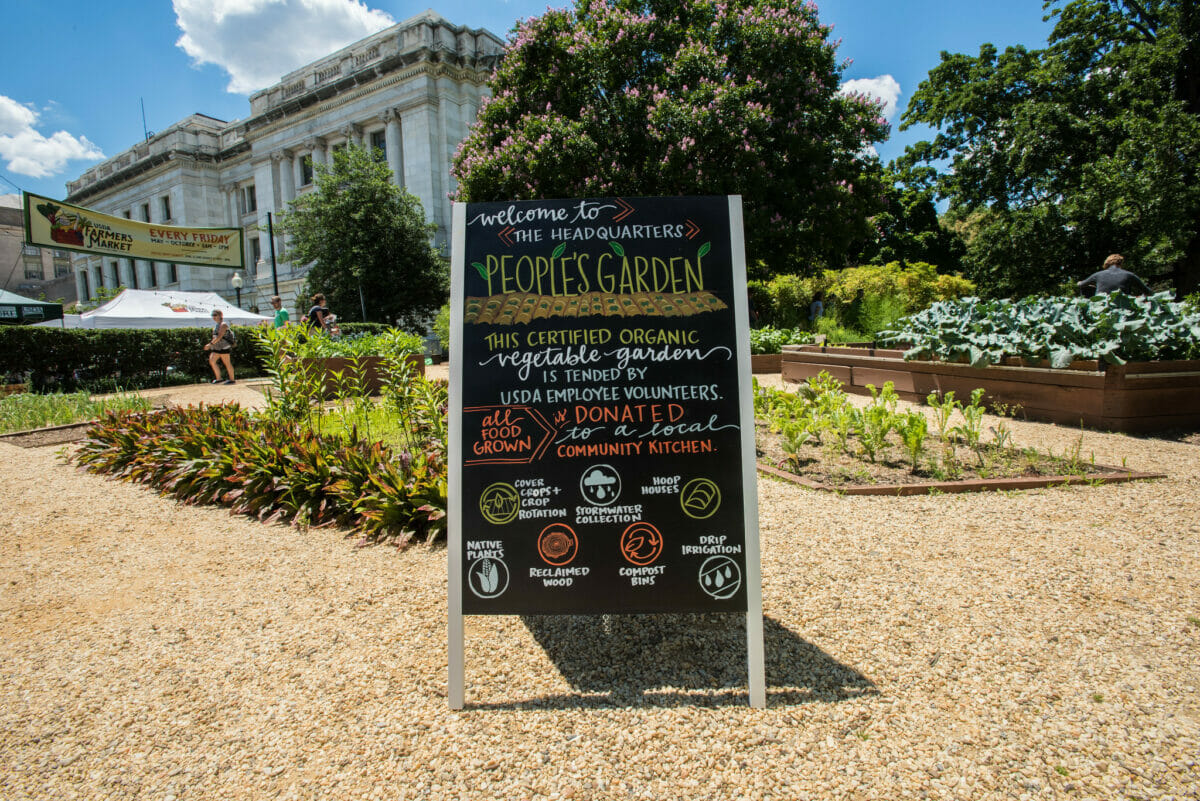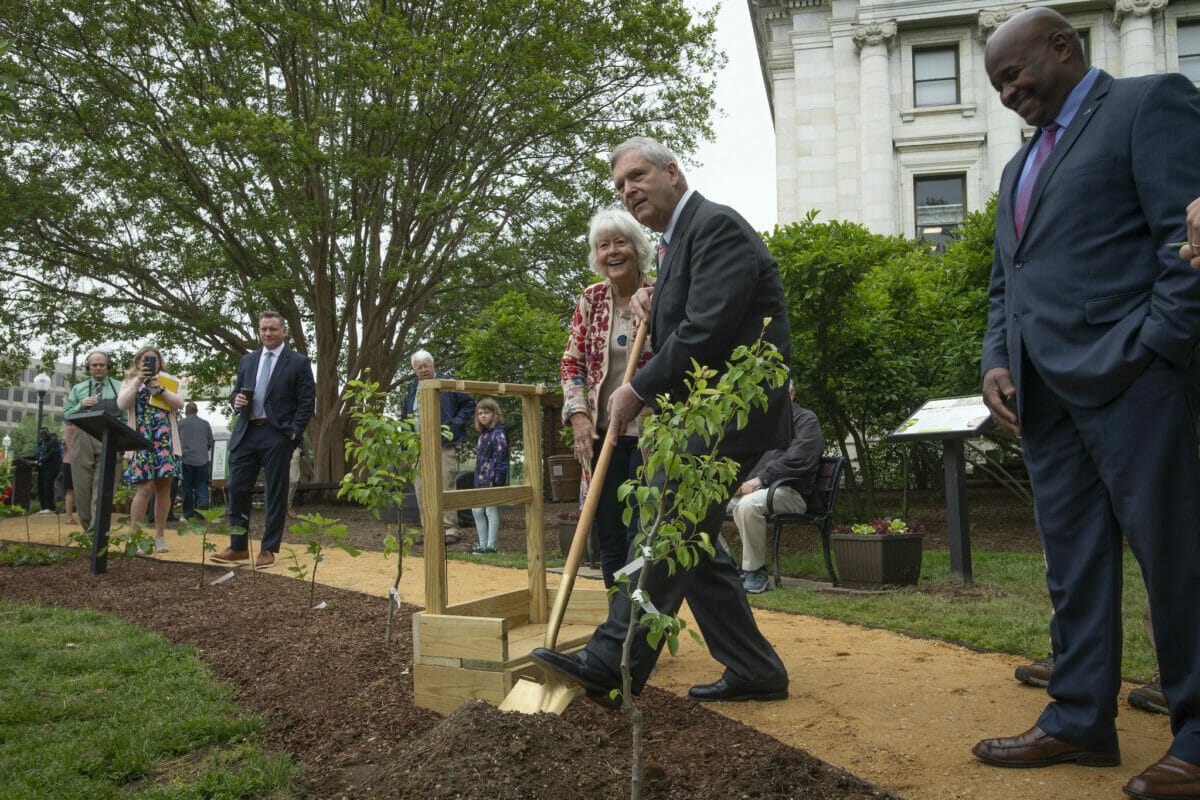The initiative is back and expanding, with a focus on food education in urban centers.

Last week, Agriculture Secretary Tom Vilsack officially reopened the first People’s Garden on the National Mall in Washington, DC. Situated centrally, the garden benefits from foot traffic from people heading to the Smithsonian, and it draws a lot of attention. There are signs up throughout the space, with information about things such as composting or soil health. The garden boasts wide rows and wheelchair-accessible plots filled with crops such as peas, lettuce and radishes.
Most people don’t expect to see a working garden next to a national museum. But that’s exactly the point. “You see [the garden] and think ‘oh, it’s agriculture, it has nothing to do with my life,’” says Gloria Montaño Greene, the deputy undersecretary of farm production and conservation with the USDA. “But now, with this garden, you are understanding what is grown, why things are grown, how things are grown, how they connect pollinators, how you connect food, waste reduction and other items.”
While the People’s Garden isn’t new—Vilsack originally introduced the idea in 2009, which ran in its original form until 2016—Montaño Greene says this version certainly is. The recent ribbon-cutting in Washington celebrated the first People’s Garden, but that was just the tip of the iceberg. Gardens in 17 other urban centers across the country are in the works. So far, cities such as Atlanta, New Orleans and Minneapolis are among the new sites, and the USDA plans to expand to other cities over the next year.
“Traditionally, we talk about [agriculture] in rural areas. I think we need to strengthen how people connect to agriculture, growing their own food and what it means to have a local food system,” Montaño Greene says. That’s why the USDA chose these large urban areas for the new garden sites, with their strategic goals in mind. “How do we build a resilient local food system? How do we think about sustainable practices?” For Montaño Greene, the answer lies within a local garden.
RELATED: The Pandemic’s Gardening Boom Shows How Gardening Can Cultivate Public Health
Whatever crops the gardens do produce will be donated to local food kitchens and pantries, but in truth they likely won’t produce much. Many of the gardens are simply not big enough to grow food at a city-wide scale. Instead, Montaño Greene says the focus is about food education and what the garden may inspire others to do. “Think about how we are bringing communities together and explaining what practices to use or the decision to grow specific plants in [specific climates].”
The programs will be run by local USDA staff and volunteers at the sites across the country. Right now, the individual cities have been identified, but not all of the centers have a designated plot of land ready to go. That, Montaño Greene says, is the next step.
